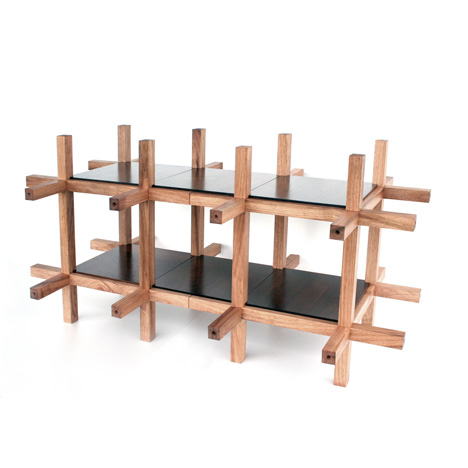
Chidori Furniture by Kengo Kuma and Associates
Traditional Japanese toys inspired this modular furniture by architects Kengo Kuma and Associates for the East Japan Project.
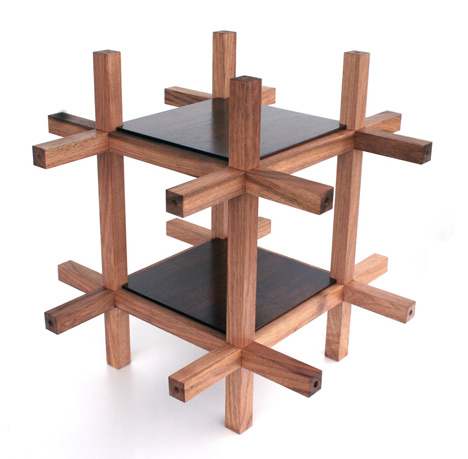
Twelve wooden sticks slot together without glue to form the units, which combine to make shelving or tables.
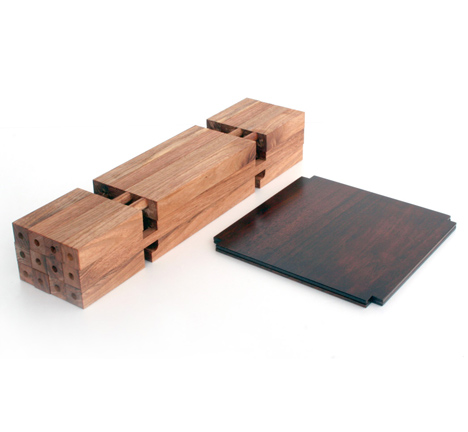
The six-sided units can be connected to one another from any edge.
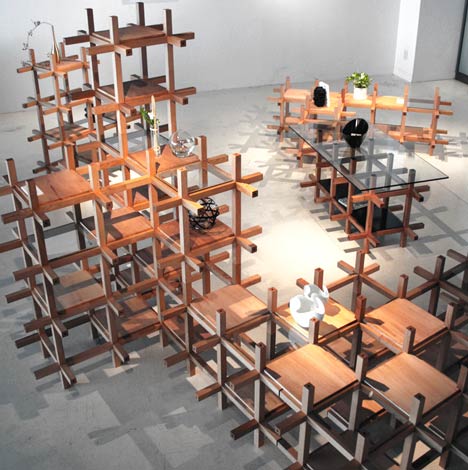
The Chidori Furniture is named after Chidori toys, which are made from simple wooden components with unique joints - see another furniture design based on a Japanese puzzle here.
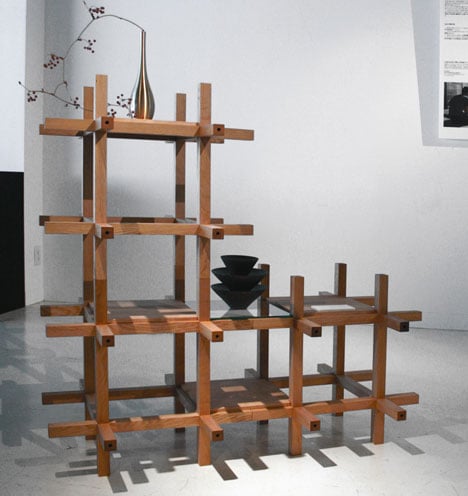
East Japan Project brings together designers and local craft makers in the region, offering support to communities devastated by the Tohoku earthquake.
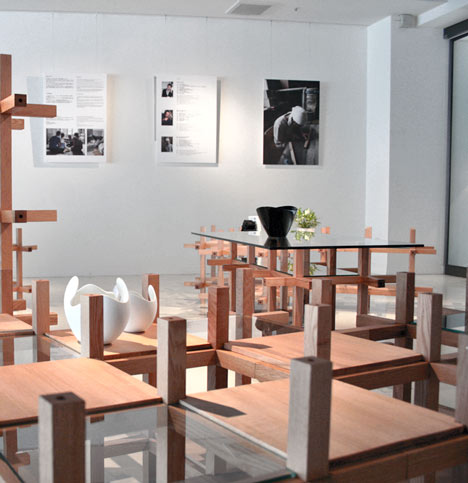
The pieces are made by skilled carpenters in the Tohoku region, which has traditionally been associated with small-scale craft manufacturing.
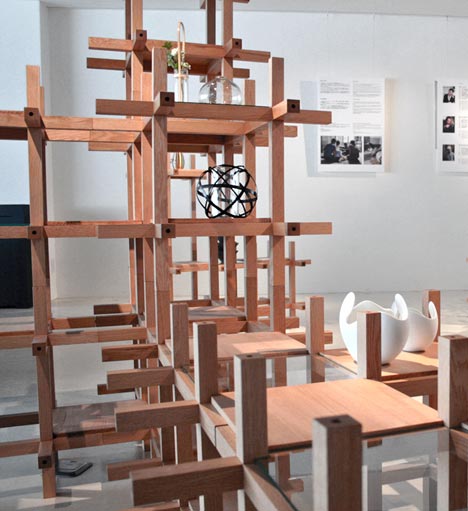
You can see more stories on projects supporting those affected by the earthquake here.
Here is some more information from the East Japan Project:
East Japan Project (Ejp) is a collaboration between designers and traditional craft artisans from East Japan, with the purpose to propose The New Lifestyle as a concept design for post 3.11 Tohoku earthquake. The New Lifestyle refers to a way of life that is deeply rooted in a locality. Locality is another name for the system in which every aspect of a place – climate, culture, and people – is integrated in a natural way. This system however, disappeared in the urbanized society of the 20th century with its pursuit for efficiency and convenience. The 2011 Tōhoku earthquake in eastern Japan urges us to revisit this lost system and reevaluate its implications for a modern society.
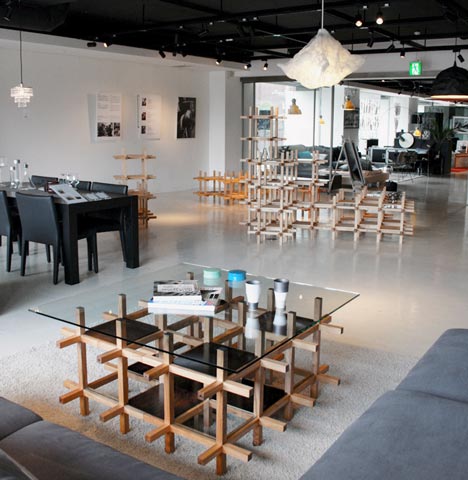
The New Lifestyle attempts to reverse the course of the 20th century and to revive the notion of place through the collaboration with craftsmen from the Tōhoku region in eastern Japan. – Yanagi Muneyoshi who lead the mingei (folk craft) movement of Japan in the late 1920s, once called the Tohoku region ‘the land of handcraft’.
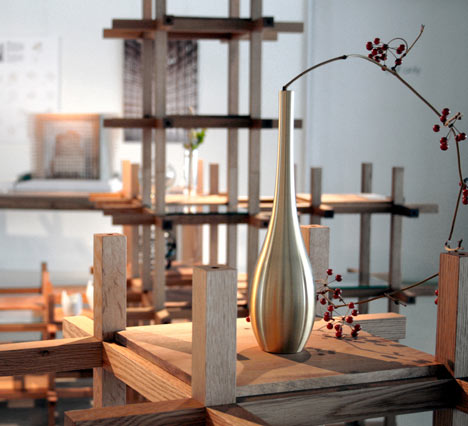
In the framework of the East Japan Project (Ejp), to achieve this mode of New Lifestyle, the products are conceptualized as new types of daily tools with a deep appreciation of local craftsmanship and material and are to be part of a larger product portfolio called, ‘location’.
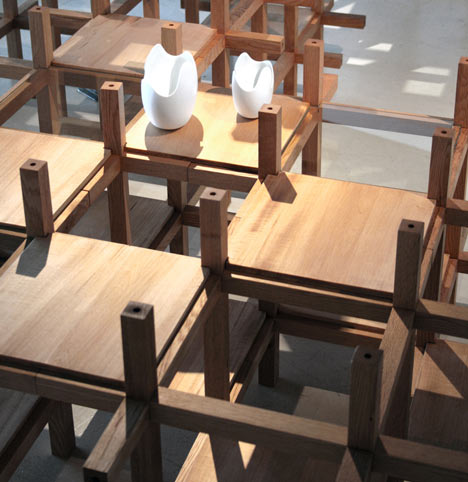
As one of Ejp Products, Chidori Furniture is a flexible system developed from the joint system of Chidori. Chidori, the name of an old Japanese toy from Hida Takayama, a small town in Japan, is originally an assembly of wood sticks with unique joints. Transformed from the traditional system of Chidori, 1 unit of Chidori Furniture consists of 12 timber sticks with different junction details. Each modular unit of Chidori Furniture can be connected to from all 6 sides making numerous combinations possible. Merely by twisting the sticks, without any nails or metal fittings, it shows a myriad of possibilities to become anything from a table to a shelf. The 2010 project GC Prostho Museum Research Center by Kengo Kuma and Associates is another project developed on basis of the Chidori system.
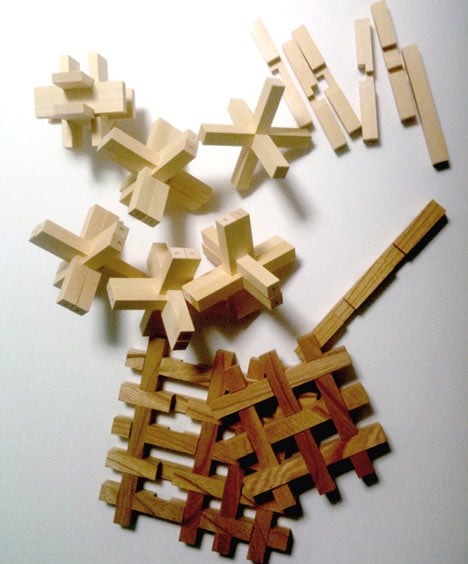
The junction details of the system require the high level of craftsmanship in Tohoku region to produce. One of the manufacturers, Fujisato Mokkoujo (Fujisato Woodshop) in Iwate Prefecture, is well- known for making Iwayado Tansu Drawers, which originated in the late 1700s. Their expertise in precise wood crafting and lacquer painting could produce multiple identical units of Chidori Furniture.
Chidori Furniture is currently exhibited in Bals Tokyo Nakameguro and Ginza stores and is also for sale.
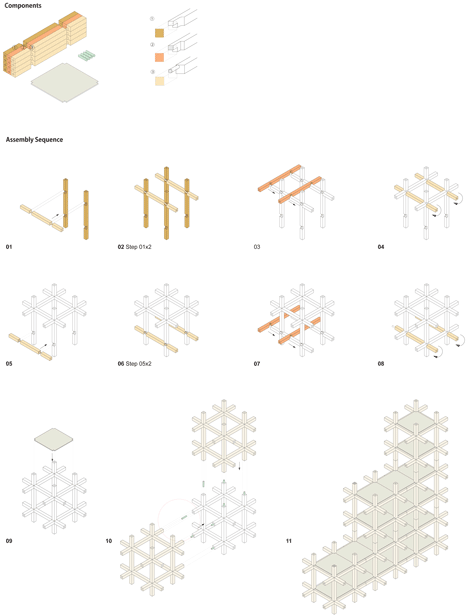
Click above for larger image
Activities of EJP include:
- Designers and craftsmen from East Japan will collaborate to develop items of daily use that provide a sustainable and minimal New Lifestyle.
- Multiple corporations and groups will collaborate beyond the boundaries of a commercially driven enterprise and industry to develop a strong distribution and cooperative network.
- EJP will conduct a field study and research of the unique traditional craft industry scattered in the regions of East Japan.
- EJP will raise money from the profit of the EJP products sales to support the next generation of artisans, to acquire the skills of traditional crafts in East Japan.